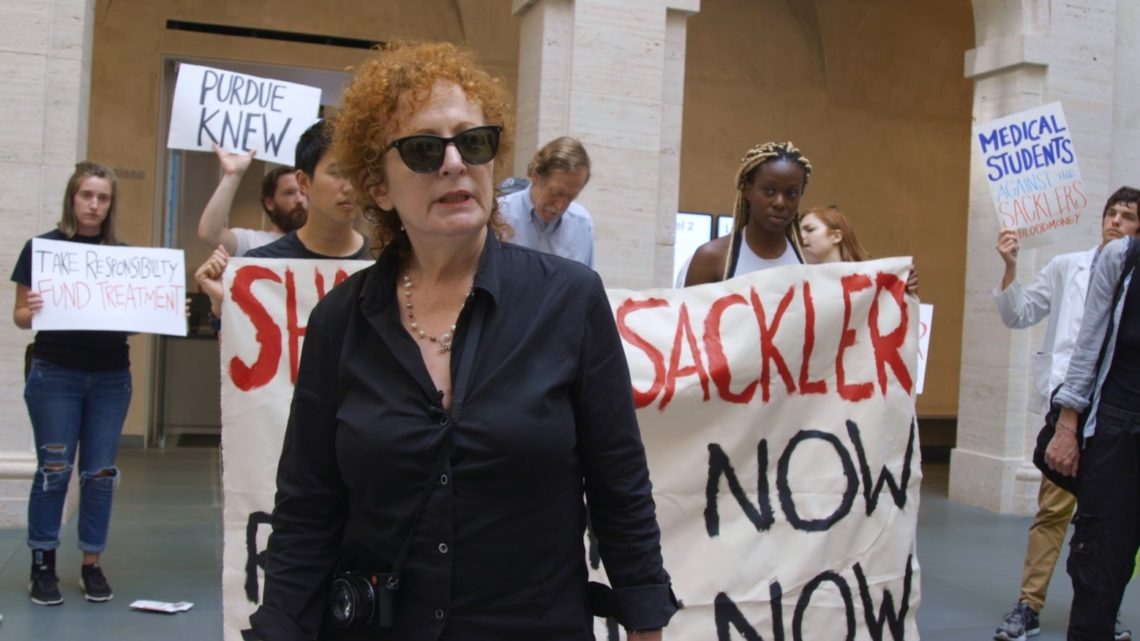Tropic Sprockets / All the Beauty and the Bloodshed
By Ian Brockway
“All the Beauty and the Bloodshed” is the story of Nan Goldin and her journey in protest against the Sackler family, which is responsible for the powerful drug Oxycontin.
The documentary directed by Laura Poitras (Citizen Four) is immersive, melancholy and potent. Despite the film’s haunt and sadness, it is a testament to Goldin’s commitment to holding the Sacklers accountable as well as her passion for creativity.
Goldin took Oxycontin to deal with tendonitis in her wrist. At first she took it as prescribed but in a very short time (practically overnight) she went from 3 pills a day to 18. In the mid 80s, Goldin entered rehab. Now she is driven to holding the pharmaceutical family responsible.
The film shows her fearlessly protesting at the Met museum, littering the pool with prescription bottles. She also filled the Guggenheim with floating prescriptions releasing the slips of paper like malevolent white birds.
Goldin also details her life, guilty over her sister’s suicide. Goldin’s parents never gave her or her sister the necessary love to be secure. Goldin turned to photography as an outlet. She documented her life, taking pictures of street people and artists in a natural manner almost like cinema verite.Goldin was inspired by marginal people and eccentrics akin to Diane Arbus.
Goldin was close to the pulp-kitsch director John Waters and a dear friend to the campy comic actress Cookie Mueller. Goldin herself found notoriety in the art world, but because of the white evil of Oxycontin, her life spun out of control.
At times, one wonders whether Goldin’s protests will work as events are so daunting. There are threatening calls and stalkings. The Sacklers appear as the mafia. To add to the eerie feeling, there are spooky filmed scenes of the Goldin family in suburbia that recall David Lynch. The red-flowering tree in the yard is as sinister as the poisoned apple in “Snow White.”
The great surprise is that Goldin achieves victory in many ways.
Above all (especially by mentioning the art censorship during the mid 80s) this film is a testament to the power of weaponized creativity in its attempt to make life better. The film can also be seen as a living record of what Nan Goldin and Laura Poitras both endured in the process of filming.
Write Ian at [email protected]
[livemarket market_name="KONK Life LiveMarket" limit=3 category=“” show_signup=0 show_more=0]



No Comment